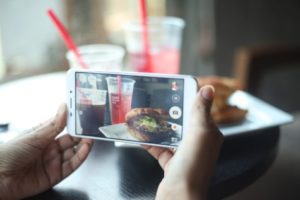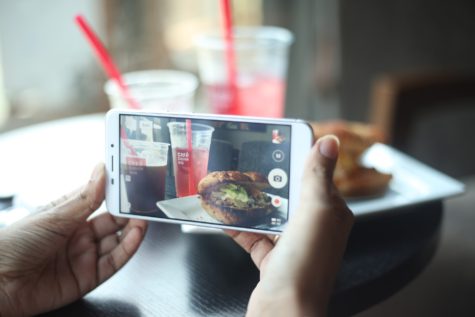SEATTLE — Posting photos of a beautifully-prepared meal is nothing new on social media. “Food porn,” as it’s been dubbed, is a popular way for people to share food reviews at restaurants or to show off final products of recipes. Now a new study finds that food porn is also good for dieters — serving as an interactive journal for those looking to eat healthy or lose weight.
Researchers at the University of Washington discovered that many people are using Instagram as a means for tracking each meal they eat and some even rely on friends and followers to keep them in check and hold them accountable for meeting various diet goals.
“The benefit of photos is that it’s more fun to do than taking out a booklet or typing hundreds of words of description in an app,” says lead author and UW human centered design and engineering doctoral student Christina Chung in a university news release. “Plus, it’s more socially appropriate for people who are trying to track their diets to snap a photo of their plate when they’re out with friends — everyone’s doing it and it doesn’t look weird.”

Chung and her team interviewed 16 people who use Instagram for this very purpose, with hopes of learning the advantages and disadvantages to this dietary method. Before digging into each meal they ate — anything from fruit they’re snacking on to a quick to-go burrito in the car — the participants snapped a photo and then shared the images on Instagram using the hashtag #fooddiary or #foodjournal.
The researchers found that by photo-journaling on the social network, users can hold themselves accountable perhaps much sooner than they otherwise would should they notice numerous pictures of French fries or scoops of ice cream on their photo grids.
“When you only have one data point for a pizza or donut, it’s easy to rationalize that away as a special occasion,” says senior author Sean Munson, assistant professor of human centered design and engineering at the university. “But when you see a whole tiled grid of them, you have to say to yourself, ‘Wait, I don’t actually have that many special days.'”
Similarly, a follower might quickly identify a user who is eating too much junk or posting photos of oversized portions and give them a nudge to stick to their intended diet plan. The participants found that having an social network monitoring them actually made them more honest when it came to documenting what they ate.
“With Instagram, it helped me because I was taking a picture of it — it’s real and it does exist and it does count towards what I was eating. And then putting up a visual image of it really helped me stay honest,” says one of the participants, who admitted that she would sometimes fail to document snacks on a previous account with a fitness app.
Using hashtags and finding like-minded dieters allowed the users to interact with people who actually want to follow each other’s food porn feeds. Participants noted it made them feel better than if they were to bother friends and family with the images every day. Instagram made this even easier for the dieters because the network allows users to create multiple accounts for various uses under the same profile — allowing them to join an array of communities.
“With Instagram, you can have a separate part of your profile dedicated to food journaling and you don’t have to be worried that your family member or neighbor who just wants to see pictures of your dogs or vacations will be turned off,” says Chung. “It’s not funneling everything to the same channel.”
The researchers plan to present their findings at the CHI 2017 Conference on Human Factors in Computing Systems in May.

Comments